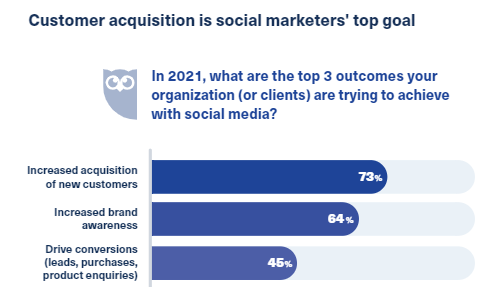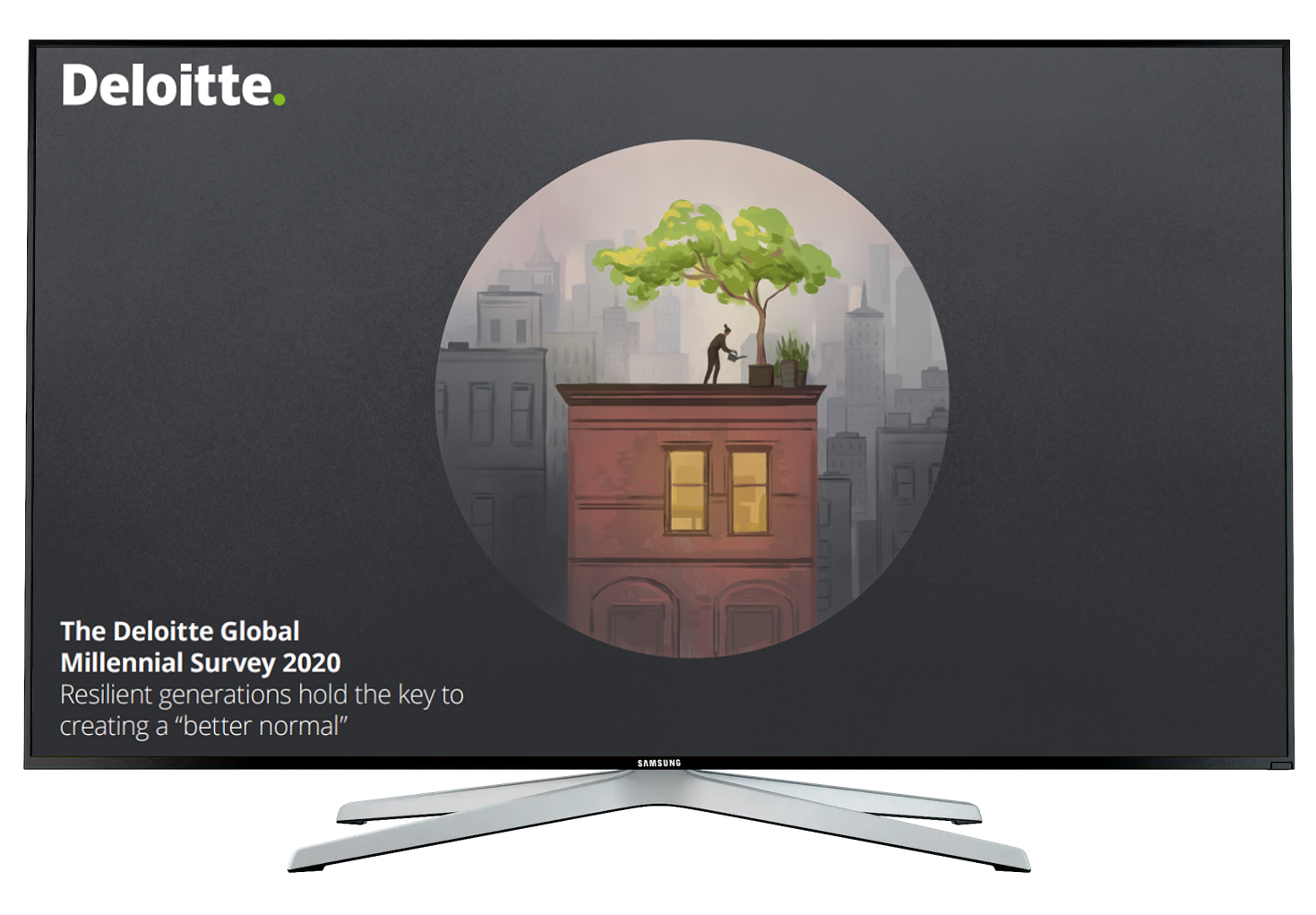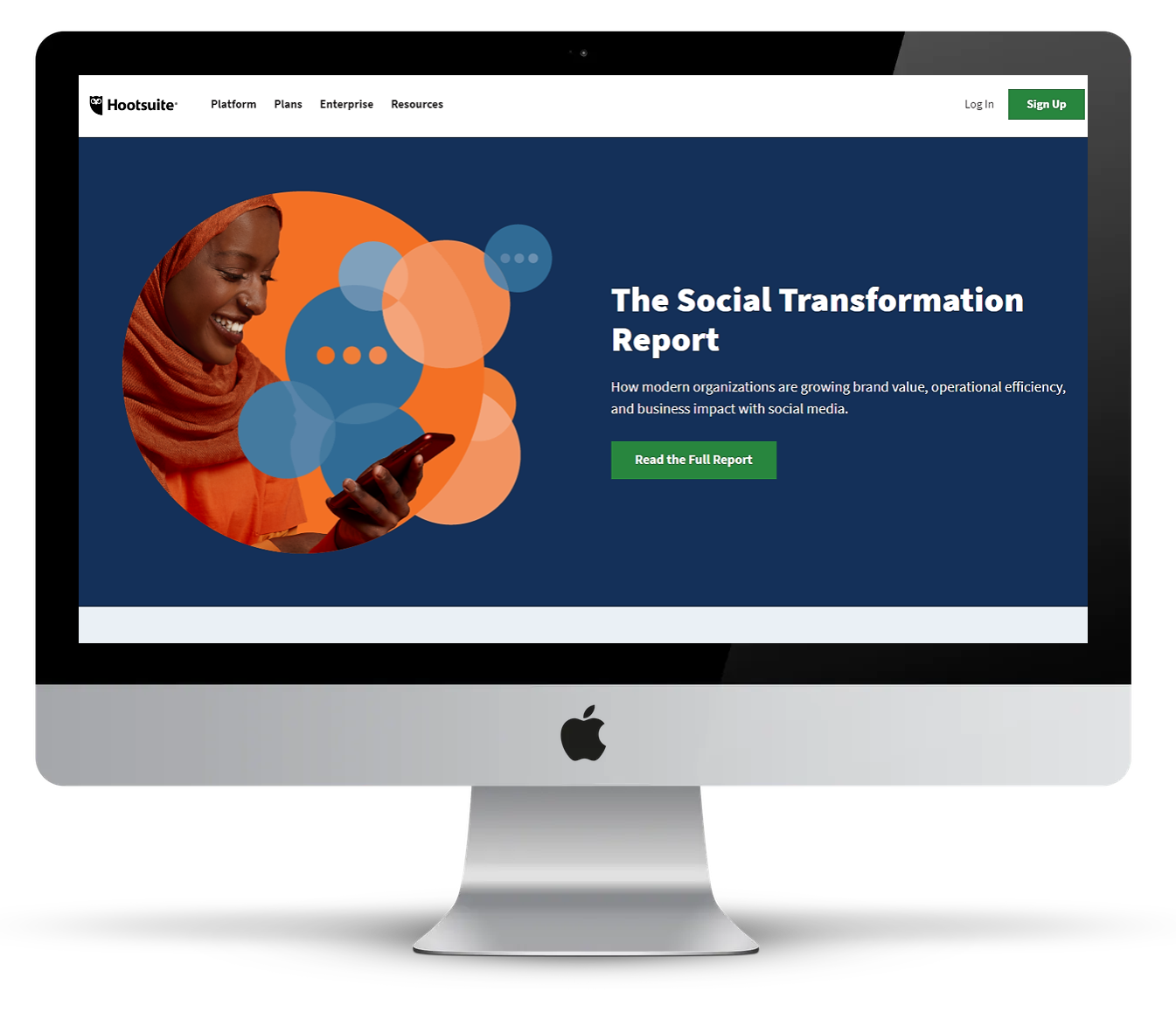The beginning of the new year has brought with it a flurry of interesting research from some of the big names in marketing and social media.
To help you prepare for another challenging year ahead, we've sifted through the findings from the latest surveys from companies such as Hootsuite and Deloitte and identified a number of key trends that will be relevant to your recruitment and marketing teams.
Trend #1: The Rise & Rise of Instagram
Despite ongoing innovations and updates from new and existing social media competitors, Instagram continues to outperform other platforms when it comes to youth audience engagement across the board.
With its launch of Instagram Reels last year, which allows users to create and share 15-second videos with others in a dedicated feed on the channel's Explore page, the platform is tapping into the growing trend for video sharing and showing itself to be an agile competitor in the face of the much-hyped TikTok, a platform which is credited by many as the driving force behind the video-sharing trend.
We've seen this reflected in the results from our annual digital marketing and web survey report - Instagram is the platform institutions have seen the most engagement from last year.
Findings from their Digital 2020 October Global Statshot Report also show the channel added the greatest number of new users between July and September 2020, posting even stronger growth figures than Facebook. The findings also show that Instagram grew its advertising reach by 7.1% in the most recent quarter — more than three times that of Facebook at 2.2%.
With its continued and proven success, it's no surprise that marketers are making Instagram their top choice for social investment in 2021. Hootsuite's 2021 Social Trends Report shows 60% of marketers are putting trust in the continued popularity of Instagram and looking to increase budget spend on the platform. Our own research, looking specifically at the decision-makers in the higher education sector, and just over half of the institutions surveyed plan to focus efforts on Instagram in 2021.
After a year of constant change, it's reassuring to see some stability when it comes to channel engagement and it is clear that Instagram will be a key platform for the Higher Education sector to tap into over the next few months.
However, it's always worth keeping in mind that social trends can change rapidly and, although Tik-Tok has not proven itself to be as big a competitor to Instagram as many thought it would be in 2020, at least in terms of institutional use of TikTok, it will still be a channel worth keeping an eye on when it comes to youth audience engagement for institutions over the coming months and we've seen many more universities dipping a toe in the TikTok water over recent months.
Trend #2: An Increased focus on ROI
After the turbulent year that was 2020, brands and institutions alike will be focused on achieving the maximum return on any and all investments, putting pressure on social media initiatives to deliver across multiple touchpoints.

One key target for institutions running social media campaigns will be to attract new students, a goal that is echoed by the wider corporate market, with 73% of all marketers surveyed as part of Hootsuite's Social Trends Report ranking “increased acquisition of new customers” as their top outcome for social in 2021.
Whilst its understandable for the education sector to be aligned with corporate marketers on the goal for acquisition, the fact that only 23% of the marketeers surveyed by Hootsuite cited “improving the customer experience” as a key business outcome for social activity is a worrying trend if echoed by universities, although this could just be the voice from within corporates under huge pressure to deliver after a year which knocked many off courses.
With the social element of university life being among the most important factors for student retention and recruitment, improving the student experience will be key for institutions this year and social media can play an important role in uniting and engaging the current student body online and helping them through the changes to come.
In order to maximise ROI from social activity, institutions should ensure the content they put out on owned channels caters for new and existing students alike and provides support in providing and showcasing the offline experience online. This is already proving a successful strategy within the corporate world, with Livestream shopping events bringing in large audiences, particularly in the US, where they're predicted to generate $25 billion in sales by 2023, according to Coresight Research.
Many universities have also seen early success utilizing social channels to offer interactive open days, access to student ambassadors and faculty, competitions and virtual events as well as news updates - proving that university life can still deliver fun moments for students, despite restrictions imposed due to the pandemic.
Trend #3: The Importance of Purpose

In Deloitte's recently released annual survey of millennials and Gen Z, 60% of respondents said they plan on buying more products and services from large businesses that have taken care of their workforces and positively affected society during the pandemic. This is an important insight for institutions to be aware of as students are likely to have the same expectations when it comes to the values and efforts shown by their current or prospective university.
In order to cater to the socially conscious student, universities should carefully consider their own values, environmental efforts, charitable initiatives and brand partnerships. Social media can play an important role when it comes to showcasing the hard work being undertaken to support students and the local and global community, particularly during and in the recovery stages of the pandemic.
However, it will not be good enough to simply talk about your institution's values. Students will need to see these in evidence and in action. Those looking at their higher education options will likely want to know how institutions have supported student wellbeing during the phases of the pandemic, what additional support they've provided for foreign students who have lacked a local support network, and even how they've supported local and global causes during these times of crisis.
Using social media channels to showcase your institution's ongoing journey through the pandemic will therefore be important, and more important still is the need for social content to engage students in conversation and bring them along with you in the journey, and even in the decision-making process, in order to build real connections.
Trend #4: When it comes to utilizing social data, it pays to use a paid approach
In the Social Transformation Report conducted by Hootsuite in partnership with Altimeter, 54% of brand marketers and executives said they aren't confident that their social media followers are more valuable customers than those they don't engage with. Hootsuite suggests this is because social media managers don't have a good enough understanding of who they are responding to.
Whilst university marketers might have a slightly easier time when it comes to understanding the audiences that are engaging with them on social channels, it can still be difficult to prove that activity is reaching the right students. To address this, social marketers are going to be looking more deeply at data integration as a way to address the issue.
Hootsuite research shows that, whilst only 10% of marketers feel they have mature practices around integrating social data into enterprise systems, 85% of those that do have confidence in their organization's ability to accurately quantify the ROI of social media.
Whilst data integration can be a costly, confusing, and time-consuming undertaking for any organization, Hootsuite's report showed that marketers that successfully implement a strategy of both paid and organic social media activity, and have reached a point of data maturity, found it a more accessible entry point to help them better connect social engagement to customer identity and measurable ROI. Their research also showed that organizations with completely integrated paid and organic social strategies are 32% more confident in quantifying the ROI of social media.
The role of social media is set to grow in 2021
Whether you're looking to focus on student recruitment, provide a smooth transition to a new normal as the pandemic restrictions lift, or create a space for student fun and engagement in 2021, social media will play a key role in helping you deliver activity that resonates with your audiences and the above trends will be helpful to keep in mind as you plan your activity.
Are you looking to make changes to your social media strategy this year? We'd love to hear what you'll be doing differently.

:format()//media/social-media-research-160221.png)

